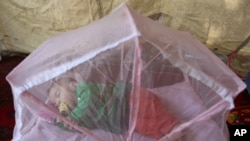The World Health Organization announced that a new wave of dengue fever has been confirmed in Afghanistan with a total of 64 cases being reported between June 12 and July 30 from Nangarhar province.
So far, there are no known associated deaths. Of the 64 cases, 47 were female and all cases were found in people above the age of 5 years old.
Dengue fever is a mosquito-borne disease that can have a severe public health impact. There are no specific treatments so the best way to combat the disease is prevention, including proper disposal of solid waste, appropriate use of insecticides, increased community awareness, and careful clinical detection and management of dengue patients.
“Afghanistan is already battling a mix of complex humanitarian emergencies because of the ongoing conflict, recurrent natural disasters and disease outbreaks,” said Dr. Luo Dapeng, WHO Representative in Afghanistan. “Although the reported number of dengue cases can still be managed, we need to take urgent action to prevent further spread and minimize its impact on the country’s health system and on the limited number of health workers.”
The WHO says it is leading the response to the dengue fever outbreak by providing technical support to the health authorities and partners. WHO has distributed 2000 dengue fever rapid tests as well as collaborating with health care workers to conduct a series of capacity building workshops which has targeted over 550 health care workers at different facilities in the Nangarhar province.
Afghanistan has seen dengue outbreaks in the past including the first outbreak of dengue fever which was first reported in 2019 in the eastern region of Afghanistan. This outbreak infected 15 people with no reported deaths. In September 2021, the disease returned, infected 775 people and killed one person.
Dengue Fever Outbreak Confirmed in Afghanistan, WHO Says








